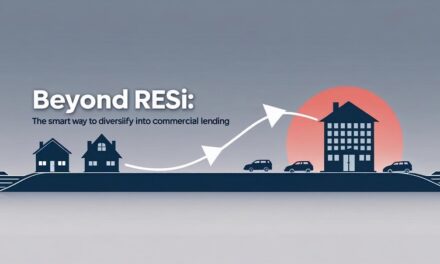Too Busy to Read? We’ve Got You.
Get this blog post’s insights delivered in a quick audio format — all in under 10 minutes.
This audio version covers: The Help to Buy Scheme: A Broker’s Comprehensive Guide to Client Risks and Best Interests Duty
The Self-Employed Lending Boom
An interactive guide to the new policies from Westpac & NAB and what they mean for brokers.
The Market at a Glance
Major Bank Playbooks: A Head-to-Head
While both now offer 1-year assessments, their strategies, target clients, and fine print differ dramatically. Click tabs to compare.
Strategy: The “Frustrated Prime”
Westpac’s policy is a targeted product designed to reduce paperwork for established, low-risk clients who are annoyed by the traditional two-year assessment.
Ideal Client
An established sole trader (e.g., builder) with 2+ years of history, a 20%+ deposit, and a strong recent income year they want assessed.
The Fine Print: Key Exclusions
- 2+ Years Trading History Required: Not for new businesses.
- LVR Must Be 80% or Less: No LMI applications are accepted on this policy.
- Simple Structures Only: Not for complex entities or multiple business incomes.
Strategy: The “Business Ecosystem”
NAB uses the 1-year home loan policy as an entry point to capture the entire banking relationship of high-value, self-employed professionals.
Ideal Client
A self-employed professional (e.g., accountant, solicitor) with a smaller deposit (e.g., 10-15%) who can leverage NAB’s unique LMI waiver policy.
The Fine Print: Key Differentiators
- Powerful LMI Waivers: Extends to various professionals, allowing for LVRs up to 90% without LMI.
- Digital-First Process: Offers digital forms for a potentially faster workflow.
- Integrated Lending: Encourages bundling of home and business loans in a single application.
The Full Spectrum: Majors vs. Specialists
The majors’ new policies are a huge step forward, but specialist lenders still own the advantage in key areas of flexibility.
Top 3 Specialist Advantages
-
✓
Short ABN History
Accept clients with as little as 6 months of trading history.
-
✓
True Alt-Doc
Verify income with BAS or bank statements, no tax return needed.
-
✓
Broader Risk Appetite
Greater flexibility for minor credit issues and complex situations.
Interactive Broker Playbook
Answer three quick questions to instantly identify the correct lending stream for your self-employed client.
The Help to Buy Scheme: A Broker’s Comprehensive Guide to Client Risks and Best Interests Duty
The Australian Government’s “Help to Buy” (HTB) scheme represents a significant intervention in the nation’s housing market, designed to address declining rates of home ownership, particularly among low-to-middle-income households. While presented as a mechanism to help Australians enter the property market sooner, it is fundamentally a complex financial partnership between the homebuyer and the Commonwealth. For mortgage brokers, understanding this scheme extends far beyond its surface-level benefits; it is a critical matter of professional diligence, risk management, and adherence to Best Interests Duty (BID) obligations.
In This Guide
- Section 1: The Help to Buy Scheme: A Strategic Overview for Brokers
- Section 2: Deconstructing the Offer: Government Contributions and Client Benefits
- Section 3: Navigating Eligibility: A Checklist for Client Qualification
- Section 4: The Long-Term View: Unpacking the Critical Risks of Shared Equity
- Section 5: The Broker’s Playbook: Fulfilling Best Interests Duty with Help to Buy
- Conclusion: An Opportunity with Caveats
Section 1: The Help to Buy Scheme: A Strategic Overview for Brokers
Introduction: More Than Just a Deposit Scheme
The scheme, administered by Housing Australia, aims to assist 40,000 households over a four-year period by offering 10,000 places annually. It directly targets the primary barriers to home ownership: the difficulty of saving a substantial deposit and the challenge of servicing a large mortgage in a high-priced property market. The Help to Buy Act 2024 provides the federal legislative framework, but its national operation is contingent on each state and territory passing its own enabling legislation. As of mid-2025, several key states including Queensland, Victoria, and NSW have enacted the necessary laws, with a full national launch anticipated later in the year.
The structure of the scheme involves the government taking an equity stake in the property, thereby reducing the loan amount required from a commercial lender. This report will provide a comprehensive analysis of the scheme’s mechanics, eligibility criteria, and, most importantly, the significant long-term financial risks and obligations that clients must comprehend before entering into such an arrangement.
The Broker’s Crucial Role
The marketing and public discourse surrounding the Help to Buy scheme naturally focus on its most appealing features, such as enabling home ownership with a minimal 2% deposit and the promise of “getting you into a home of your own”. This creates a powerful and attractive narrative for prospective buyers. However, the profound long-term implications—including diluted capital gains, restrictions on ownership, and mandatory repayment triggers—are detailed within complex legislative instruments like the Help to Buy Program Directions 2024.
An inherent information asymmetry exists between the simplified public messaging and the complex reality of the 25-year financial agreement. The average client is unlikely to read, let alone fully grasp, the nuances of these legal documents. This places the mortgage broker in the pivotal role of translator and risk advisor. It is the broker’s legal and ethical obligation under the Best Interests Duty to bridge this knowledge gap. Failing to move the client’s focus from the short-term “win” of a low deposit to the long-term consequences of shared equity would constitute a significant failure in this duty. A compliant conversation requires a thorough, balanced explanation of both the immediate benefits and the enduring risks, ensuring the client is making a genuinely informed decision about their financial future.
Section 2: Deconstructing the Offer: Government Contributions and Client Benefits
The Core Proposition: A Shared Purchase
The Help to Buy scheme operates on a shared equity model, where the government co-invests with the homebuyer. This structure is designed to significantly reduce the upfront financial hurdles for eligible participants.
The government’s equity contribution is substantial and varies based on the type of property being purchased:
- Up to 40% of the purchase price for a newly built home.
- Up to 30% of the purchase price for an existing home.
In return, the homebuyer is required to provide a minimum deposit of just 2% of the purchase price, sourced from genuine savings. The remainder of the purchase price is then financed through a standard home loan from a participating lender.
A primary and immediate financial benefit of this structure is the elimination of Lenders Mortgage Insurance (LMI). As the combined value of the client’s deposit and the government’s equity contribution will always be well over the 20% threshold, LMI is not required, saving the buyer thousands of dollars in upfront costs.
Furthermore, a key feature that distinguishes the Australian HTB scheme from some international counterparts, such as the model in the United Kingdom, is that the participant is not required to pay any rent or interest on the government’s equity share throughout the life of the agreement. The UK’s scheme, for instance, introduces interest payments on the equity loan after an initial five-year interest-free period, adding a significant ongoing cost for participants. The absence of this feature in the Australian model simplifies the ongoing costs for the homeowner.
Impact on Borrowing
The direct consequence of the government’s equity contribution is a reduction in the principal loan amount the client must secure from a lender. For example, on a $600,000 existing home, a client would seek a mortgage for only $420,000 (70%), rather than a loan of up to $588,000 (98%) under a low-deposit scenario without the scheme. This smaller loan principal has two major positive effects for the buyer:
- Lower Mortgage Repayments: The monthly repayments on a smaller loan are significantly lower, easing the ongoing financial pressure on the household budget.
- Improved Serviceability: The reduced loan amount makes it easier for applicants to meet the lender’s loan serviceability tests, potentially allowing individuals and couples on lower-to-middle incomes to qualify for a loan they might otherwise be denied.
Section 3: Navigating Eligibility: A Checklist for Client Qualification
For a client to access the Help to Buy scheme, they must meet a strict set of eligibility criteria. Brokers must verify these details with clients at the outset of any discussion to ensure they are a viable candidate for the program. The most current criteria are as follows:
- Citizenship: All applicants must be Australian citizens and be at least 18 years of age.
- Income Thresholds: The scheme is targeted at low-to-middle-income earners. The annual taxable income, as evidenced by a Notice of Assessment from the Australian Taxation Office for the previous financial year, must be at or below the following thresholds:
- Individuals: $100,000
- Couples/Joint Applicants: $160,000 It is important to note that these figures were increased in the 2025 Federal Budget from the originally proposed $90,000 and $120,000 limits mentioned in earlier documentation.
- Property Ownership: Applicants must not currently own or have an interest in any other property or land, either in Australia or overseas, at the time of application. The scheme is not exclusively for first-home buyers; an individual who previously owned property but has not owned any for the last 10 years may be eligible.
- Residency Requirement: The property purchased under the scheme must be the applicant’s principal place of residence. It cannot be used as an investment property.
- Financial Requirements: Applicants must demonstrate they have saved the minimum 2% deposit. They must also be able to secure a standard home loan from a participating lender to cover the remainder of their share of the purchase price and be able to cover all associated upfront costs, such as stamp duty and legal fees.
In addition to personal eligibility, the property itself must fall within specific price caps, which vary by state, territory, and region. The table below outlines the most recent property price caps.
| State/Territory | Capital City / Regional Centre | Rest of State |
|---|---|---|
| NSW | $1,300,000 | $800,000 |
| VIC | $950,000 | $650,000 |
| QLD | $1,000,000 | $700,000 |
| WA | $850,000 | $600,000 |
| SA | $900,000 | $500,000 |
| TAS | $700,000 | $550,000 |
| ACT | $1,000,000 | N/A |
| NT | $600,000 | N/A |
| Source: Data compiled from 2025 Federal Budget announcements and related reports. | ||
While these high price caps appear to open up a wide range of properties, they create a potential “serviceability trap” that brokers must help clients navigate. For example, the price cap for a property in a major NSW centre is $1,300,000. If a client wished to purchase an existing home at this price, their share would be 70%, requiring a mortgage of $910,000. It is extremely unlikely that a couple earning the maximum combined eligible income of $160,000 could demonstrate the capacity to service a loan of this magnitude in the current lending environment. Therefore, a critical part of a broker’s Best Interests Duty is to conduct a realistic assessment of a client’s actual borrowing power, ensuring they do not waste time, effort, and money pursuing properties that are technically eligible under the scheme but financially unattainable.
Section 4: The Long-Term View: Unpacking the Critical Risks of Shared Equity
Subsection 4.1: The Floating Repayment: How Capital Gains are Diluted
The single most critical concept for clients to understand is that the government’s contribution is not a fixed-dollar loan; it is an equity investment. This means the government owns a percentage of the home, and the amount to be repaid is calculated based on the property’s market value at the time of repayment, not the original contribution amount.
When the property is eventually sold, the government is entitled to receive its initial equity percentage back, plus a proportional share of any capital gains realised. This effectively dilutes the homeowner’s profit from the sale. Conversely, if the property’s value has decreased, the government also shares in the capital loss, and the repayment amount will be less than the original contribution.
The repayment amount is formally determined by a valuation from a certified Royal Institution of Chartered Surveyors (RICS) valuer. If the property is sold, the repayment is calculated based on whichever amount is higher: the sale price or the official market valuation. This protects the Commonwealth’s investment from artificially low sale prices (e.g., sales between family members).
To ensure clients fully grasp this, an illustrative example is essential.
| Scenario | |
|---|---|
| Purchase of an existing home with a 30% government stake. | |
| Initial Purchase Price | $700,000 |
| Initial Client Share (70% mortgage) | $490,000 |
| Initial Government Share (30% equity) | $210,000 |
| Sale Price (after several years) | $950,000 |
| Total Capital Gain | $250,000 |
| Distribution of Sale Proceeds | |
| Gross Sale Proceeds | $950,000 |
| Repayment to Government (30% of $950,000) | $285,000 |
| Client’s Gross Return (70% of $950,000) | $665,000 |
| Client’s Financial Outcome | |
| Client’s Gross Return | $665,000 |
| Less: Initial Mortgage Repaid | ($490,000) |
| Client’s Net Profit (Share of Capital Gain) | $175,000 |
| Government’s Share of Capital Gain | $75,000 ($285,000 repayment – $210,000 initial stake) |
As the table demonstrates, while the property’s value increased by $250,000, the client’s net profit is only $175,000 (70% of the gain). The remaining $75,000 of the capital gain is returned to the government. This dilution of wealth creation is the fundamental trade-off for the initial assistance in entering the market.
Subsection 4.2: Forced Repayment Triggers: The Non-Negotiable Exit Points
Clients must be aware that certain events will trigger a mandatory requirement to repay the government’s equity share in full. These are not optional and can force a major financial decision, such as refinancing or selling the property.
The standard repayment triggers include:
- The sale of the property.
- The end of the primary mortgage term (typically 25 years).
- The decision to pay off the primary mortgage in full.
- A breach of the terms of the Help to Buy agreement or the primary mortgage.
Homeowners can also make voluntary repayments to buy back the government’s equity. These repayments must be made in minimum increments of 5% of the property’s current market value.
However, the most complex and potentially problematic trigger is the “Success Penalty.” The scheme’s rules state that if a participant’s household income exceeds the specified income threshold for two consecutive years, they will be required to begin repaying the government’s contribution. The official wording states this repayment must be made “in part or whole as their circumstances permit”.
This phrasing introduces a significant and unquantified risk for clients. It does not mean the obligation is forgiven; it implies an assessment and negotiation process with Housing Australia, the outcome of which is not predefined. Could this lead to a forced refinancing to release equity? A mandated payment plan? Or, in a worst-case scenario where other options are unavailable, a requirement to sell the property? The ambiguity itself is a risk that cannot be ignored.
When advising clients, a broker’s duty is to address this uncertainty directly. It would be imprudent to suggest clients can rely on the potential leniency of a government body. The most responsible advice is to treat this income trigger as a hard requirement that will likely necessitate either a full refinance or the sale of the property, as these are the primary mechanisms for generating the capital needed to repay the government’s equity stake. Clients aspiring for career progression and higher incomes need to factor this potential forced exit into their long-term financial planning.
Section 5: The Broker’s Playbook: Fulfilling Best Interests Duty with Help to Buy
A Framework for Compliant Conversations
To meet Best Interests Duty obligations when discussing the Help to Buy scheme, brokers must adopt a structured and transparent communication framework. The goal is to ensure the client makes a fully informed decision, with a complete understanding of the long-term commitments.
- Move the Conversation Beyond the Brochure: The initial conversation must deliberately shift the client’s focus from the headline benefit (the 2% deposit) to the core mechanism (the 30-40% equity sale). A powerful way to frame this is by stating: “This scheme isn’t just helping you get a loan; it involves you selling a future share of your home to the government. Let’s explore what that means for your wealth over the next 25 years.”
- Use Key Qualifying Questions to Test Understanding: Instead of simply presenting information, brokers should use targeted questions to assess whether the client has truly absorbed the risks. Examples include:
- “Let’s imagine your home’s value doubles in 15 years. What happens to the dollar amount you owe the government?” (Tests understanding of the floating repayment).
- “If you and your partner both receive promotions and your combined income goes over the $160,000 limit for two years in a row, what do you believe your obligation to the government will be? How would you plan to access the funds to meet that obligation?” (Tests understanding of the ‘Success Penalty’ trigger).
- “If you decide you want to build a new deck or renovate the kitchen in five years, what extra step, beyond council approval, will you need to take before you can start?” (Tests understanding of ownership constraints, which require pre-approval for major renovations).
- Provide Clear, Illustrative Examples: Use the capital gains calculation table (as shown in Section 4.1) as a standard part of the conversation. Abstract concepts become concrete when illustrated with real numbers. This practice is not only effective for client comprehension but is also aligned with ASIC’s guidance on using examples to explain financial products.
Documentation and Disclosure
Meticulous record-keeping is paramount. A broker’s client notes must provide clear evidence that the specific risks of the Help to Buy scheme were discussed in detail. These notes should confirm that:
- The concept of shared equity and diluted capital gains was explained.
- An illustrative numerical example of a future sale was provided and discussed.
- All mandatory repayment triggers, including the ambiguous “Success Penalty,” were explicitly outlined.
- The client was asked questions to confirm their understanding of these risks.
This level of documentation creates an unambiguous record that the broker has acted in the client’s best interests, providing them with the necessary information to make a decision that is right for their individual circumstances and long-term financial goals.
Conclusion: An Opportunity with Caveats
The Help to Buy scheme is a potentially powerful tool that can provide a pathway to home ownership for many Australians who would otherwise be locked out of the market. Its benefits—a low deposit, no LMI, and reduced initial mortgage repayments—are tangible and significant.
However, these benefits come with profound and enduring trade-offs. The scheme fundamentally alters the nature of home ownership from a wholly-owned asset to a long-term financial partnership with the Commonwealth. The dilution of capital gains, restrictions on the property, and the risk of forced repayment are substantial costs that must be weighed against the initial advantages.
For the mortgage broker, the scheme presents both an opportunity to help clients and a significant compliance challenge. The broker’s role is not to sell the scheme, but to act as a trusted, independent advisor. This requires providing the clarity, context, and critical analysis necessary for a client to determine if this complex financial product truly aligns with their personal risk tolerance and long-term wealth creation objectives. By fulfilling this role diligently, brokers not only protect their clients but also uphold the highest standards of their profession.
Works cited
- Help to Buy Shared Equity Scheme – The Office of Impact Analysis, accessed July 6, 2025, https://oia.pmc.gov.au/published-impact-analyses-and-reports/help-buy-shared-equity-scheme
- Explanatory statement: Help to Buy Program Directions 2024 – Treasury.gov.au, accessed July 6, 2025, https://treasury.gov.au/sites/default/files/2024-04/c2024-491046-es.pdf
- Supporting people into home ownership | Treasury.gov.au, accessed July 6, 2025, https://treasury.gov.au/policy-topics/housing/home-ownership-support
- Help to Buy Scheme: Government’s 30-40% Shared Equity – Updated 2025 – Mortgage Choice, accessed July 6, 2025, https://www.mortgagechoice.com.au/guides/home-ownership/help-to-buy-scheme/
- Help to Buy | Housing Australia, accessed July 6, 2025, https://www.housingaustralia.gov.au/home-guarantee-scheme/help-buy
- Help to Buy Scheme Australia (Updated Guide For 2025), accessed July 6, 2025, https://www.money.com.au/home-loans/help-to-buy-scheme
- Getting you into a home of your own | Prime Minister of Australia, accessed July 6, 2025, https://www.pm.gov.au/our-work/getting-you-home-your-own
- Exposure draft: Help to Buy Program Directions 2024 – Treasury.gov.au, accessed July 6, 2025, https://treasury.gov.au/sites/default/files/2024-04/c2024-491046-ed.pdf
- What is the Australian Labor government’s Help to Buy shared equity scheme? – OwnHome, accessed July 6, 2025, https://ownhome.com/articles/what-is-the-australian-labor-governments-help-to-buy-shared-equity-scheme
- Help to Buy (ECR163) | pbo, accessed July 6, 2025, https://www.pbo.gov.au/elections/2022-general-election/2022-election-commitment-costings/help-buy-ecr163
- Help to Buy: Australia’s new shared equity scheme explained – Futurerent, accessed July 6, 2025, https://futurerent.com.au/blog/help-to-buy-scheme-2025
- Help to Buy Scheme: What is it and how to apply? – Neighbour Day, accessed July 6, 2025, https://neighbourday.org/help-to-buy-scheme/
- Help to Buy Scheme: All You Need To Know In 2025 – CJG Finance, accessed July 6, 2025, https://www.cjgfinance.com.au/post/help-to-buy-scheme
- Help to Buy scheme explained – MoneyHelper, accessed July 6, 2025, https://www.moneyhelper.org.uk/en/homes/buying-a-home/help-to-buy-scheme-everything-you-need-to-know
- A guide to repaying your Help to Buy: Equity Loan – GOV.UK, accessed July 6, 2025, https://assets.publishing.service.gov.au/media/66bcb4bfb45d6a81cd31463a/Repayment_guide.pdf
- Help To Buy Scheme: How Does the Federal Government’s shared equity scheme work?, accessed July 6, 2025, https://www.fairlane.au/post/help-to-buy-scheme-how-does-the-federal-government-s-shared-equity-scheme-work
- Home Guarantee Scheme – Housing Australia, accessed July 6, 2025, https://www.housingaustralia.gov.au/home-guarantee-scheme
- Factsheet: Australian Government Help to Buy Scheme explained – Harvest Financial Group, accessed July 6, 2025, https://harvestgroup.com.au/factsheet-australian-government-help-to-buy-scheme-explained/
- Help to Buy Scheme: Everything you need to know – Aussie Home Loans, accessed July 6, 2025, https://www.aussie.com.au/insights/news/help-to-buy-fast-track-homeownership/
- Help to Buy overhaul: Income and price caps hiked – Your Mortgage, accessed July 6, 2025, https://www.yourmortgage.com.au/mortgage-news/help-to-buy-income-and-price-caps-hiked
- Help to Buy Scheme, Australian government shared equity: what to know – Updated : Jan 27, 2025 – UNO Home Loans, accessed July 6, 2025, https://www.unohomeloans.com.au/articles/help-to-buy-scheme
Help to Buy Scheme
An Interactive Briefing for Mortgage Brokers
How It Works: The Equity Split
This section provides an immediate look at the scheme’s core benefit. Use the sliders to adjust the property price and type to see how the government’s equity contribution reduces the client’s required mortgage, making home ownership more accessible and eliminating LMI.
Your Client’s Position
- Minimum Deposit (2%):
- Required Mortgage:
- ✓ Lenders Mortgage Insurance (LMI) Waived
Client Qualification Checklist
This section helps you quickly determine if a client meets the scheme’s strict criteria. It covers personal and financial requirements, and includes an interactive tool to check the property price caps for each state, helping you avoid the “serviceability trap” with clients.
Personal & Financial Criteria
- ✓Citizenship: Must be an Australian citizen, 18 years or older.
- ✓Income (Taxable): Below $100,000 for singles, $160,000 for couples.
- ✓Property Ownership: Must not currently own any land or property in Australia or overseas.
- ✓Residency: The purchased property must be the principal place of residence.
- ✓Deposit: Have at least a 2% deposit from genuine savings.
- ✓Loan Approval: Must qualify for a standard home loan for their share of the property.
Property Price Caps
The Long-Term Risk Simulator
This is the most critical section for your Best Interests Duty. It interactively demonstrates the scheme’s primary trade-off: diluted capital gains. The simulator shows how the government’s equity stake impacts your client’s final profit. The tabs below explain the non-negotiable repayment triggers that could force a client to sell or refinance.
Interactive Capital Gains Calculator
Total Capital Gain
Mandatory Repayment Triggers
Standard Triggers
Repayment is mandatory upon the sale of the property, the end of the loan term (e.g., 25 years), or if the client breaches the agreement terms.
The “Success Penalty”
If the household income exceeds the threshold for two consecutive years, the client must start repaying the government’s share. This could force a refinance or sale.
Ownership Constraints
Clients need pre-approval for significant renovations. Voluntary repayments can be made, but only in minimum 5% increments of the property’s *current* market value.
Fulfilling Your Best Interests Duty
The scheme’s complexity places a significant responsibility on you. This final section provides a checklist to guide your client conversations, ensuring you cover all critical risks and document that you have acted in their best interest by moving the discussion beyond the surface-level benefits.






